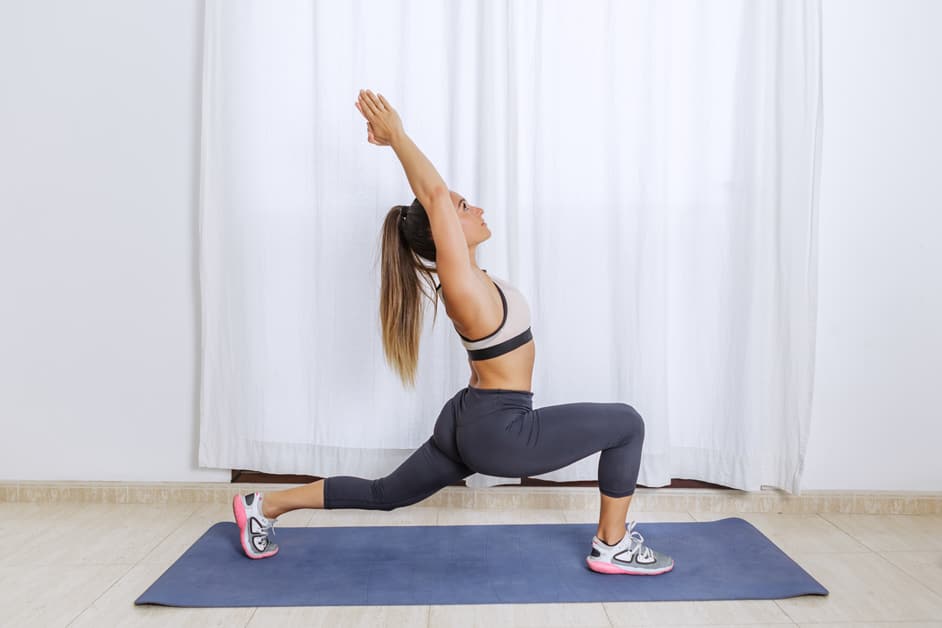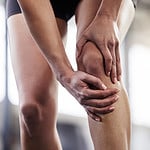Introduction
Runners may feel knee pain due to running on flats or hills, too much use, or running harder. Cooling down can help reduce the stress on the knee and ease discomfort. This guide provides some easy stretches for runners with knee pain that can cool down the body.
These stretches will:
- Increase movements in different directions.
- Release tension around muscles and ligaments.
- Give relief from knee joint inflammation.
Doing these stretching exercises after each run will improve muscular elasticity and flexibility to stay healthy while running.
Causes of Knee Pain in Runners
Knee pain is common among runners, and can be caused by many factors, such as:
- Runner’s Knee, also known as PFPS, is an overuse injury. Symptoms include a dull ache behind or around the kneecap, stiffness in the joint after rest, and tenderness of the area.
- IT Band Syndrome (ITBS) is inflammation of the ligament that runs along the outside edge of your thigh. It is caused by environmental stress and poor muscle balance. Symptoms include snapping/popping in your outer thigh while running, and tenderness with pressure along your outer leg.
- Patellar Tendonitis is inflammation of the tendon connecting muscle to bone. It affects runners who do activities involving jumping. Symptoms include stiffness in your knee joint that increases after exercise, and tenderness when pressing along your kneecap.
Stretching for Knee Pain Relief
Are you a runner who gets knee pain? Stretching can help ease this. Before or after you run, do some stretches to strengthen and stretch your knee muscles. This can alleviate pain and increase flexibility.
Here are some of the best stretches for knee pain relief:
Quadriceps Stretch
The quadriceps stretch is a great way to ease knee pain from running or any other physical activity. It can be done seated or standing, using a chair or wall for support. This exercise helps to increase flexibility in the quadriceps muscles and loosen any tension which is causing your knee pain.
Take care not to overexert yourself. Breathe normally throughout the exercise.
Start by standing with your feet hip-width apart. Bend one leg behind you at the knee joint. Use your hand on that same side to raise your bent leg so it is level with your hip. Gently push down on that side to feel a gentle stretch in your hips and thigh (quadriceps muscle). Hold for 30 seconds then switch sides. Repeat twice or three times on each side for best results.
Hamstring Stretch
Hamstring stretches are awesome for easing knee pain. They are the muscles in the back of your thigh. When tight, they can decrease knee stability and range of motion. Doing hamstring stretches regularly can make your range of motion better and reduce knee joint pain.
To do this stretch, stand with feet together. Bend forward at the waist with a flat back. Grip one leg above the knee. Pull that lower leg up behind you until you feel a slight stretch in your hamstrings. Keep your chest upright during the whole exercise. Hold each side 15-30 seconds. Rest in between each stretch if needed. Repeat several times on both sides for best results.
Gluteal Stretch
The Gluteal Stretch is a simple warm up and cool down move. It reduces tension and soreness in leg muscles and tightness in hips.
- Lie on your back. Bend your knees and feet flat on the floor. Place a pillow or towel roll below your hips.
- Cross one ankle over the opposite knee. Reach through and grab hold of the foot with both hands. Keep shoulders pressed to the ground and chest lifted.
- You will feel a gentle pull. Hold for five seconds then release. Repeat on the other side for five seconds.
- Do this three sets of five seconds on each side. This will help reduce tension and tightness in muscles around the knee joint.
Calf Stretch
Calf stretches are great for reducing knee pain and stiffness due to overuse or injuries. Tight calf muscles can add extra strain on your knee, limiting range of motion and causing pain. You can do this stretch in either a standing or seated position, whichever is more comfortable for you.
To do the stretch in a standing position:
- Stand 2 feet (60 cm) away from the wall.
- Put your hands on the wall for balance and step forward with your affected leg.
- Bend the affected knee slightly while pushing your heel into the ground. You should feel a slight stretching sensation in your calf muscle. Hold for 30 seconds, then repeat 3-5 times.
To do the stretch in a seated position:
- Sit tall in a chair with both feet flat on the floor and legs at hip-width apart.
- Cross your affected leg over the other, putting it onto your thigh. Keep both feet flat on the ground.
- Lift your toes up towards you until you start to feel a gentle pulling sensation in that calf muscle. Hold for 30 seconds, then repeat 3-5 times.
Hip Flexor Stretch
The hip flexor stretch is great for flexibility and reducing hip joint and lower back pain. Lay down or sit in a chair to perform this stretch. Stand up straight with your feet slightly wider than shoulder-width apart. Bend one knee so your heel is pressing against your buttocks. The other leg should be slightly bent to the side.
To deepen the stretch, lean forward from your hips. Keep your back straight and only stretch as far as comfortable. A burning sensation in the front of your thigh means healthy tissue release! Keep both feet on the ground while leaning forward. Hold the pose for 30 seconds then switch sides. Be careful not to over-stretch, as this could cause more harm than good.
IT Band Stretch
The iliotibial band (IT band) is a thick fascia along the outside of the thigh from hip to shin. It can become tight and cause pain and decreased range of motion. To manage knee pain, incorporate IT band stretching into your exercise program.
IT Band Stretch:
- Stand, one foot ahead and the other 12 inches behind, pointed out at 45°. Use a wall or chair for balance if needed.
- Keeping back knee straight, lean forward until feeling tension in IT band and/or calf or glutes.
- Hold 15-30 seconds, repeat 2-3 times each side. Then do squats or lunges to open up the knee joint and improve mobility.
Conclusion
Running with knee pain? Stop! Take time for cooling down and stretching. These stretches help reduce tension in the area. Build an exercise routine to strengthen your legs, hips, ankles and core. Go slow when doing any physical activity. If pain increases, stop and find a solution.
Frequently Asked Questions
Q: What are good stretching exercises for runners with knee pain?
A: To reduce knee pain, it’s important to stretch your hamstrings, quads, and calves. Additionally, you should also focus on strengthening your hip abductor muscles, as this can help reduce stress on your knees. Finally, be sure to take a few minutes after each run to do some static stretches.
Q: How often should I stretch my knees?
A: It’s important to stretch your knees before and after each run. Additionally, it’s beneficial to incorporate stretching into your daily routine, as this can help improve range of motion and reduce stiffness.
Q: What should I do if stretching doesn’t reduce my knee pain?
A: If stretching doesn’t help reduce your knee pain, it’s important to consult with a doctor. Additionally, they may recommend physical therapy, which can help reduce inflammation and improve your range of motion.





